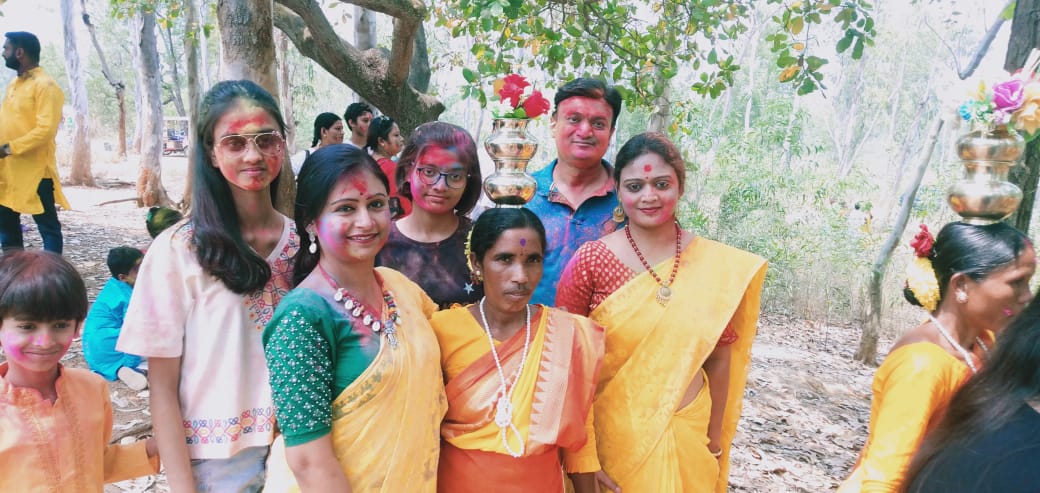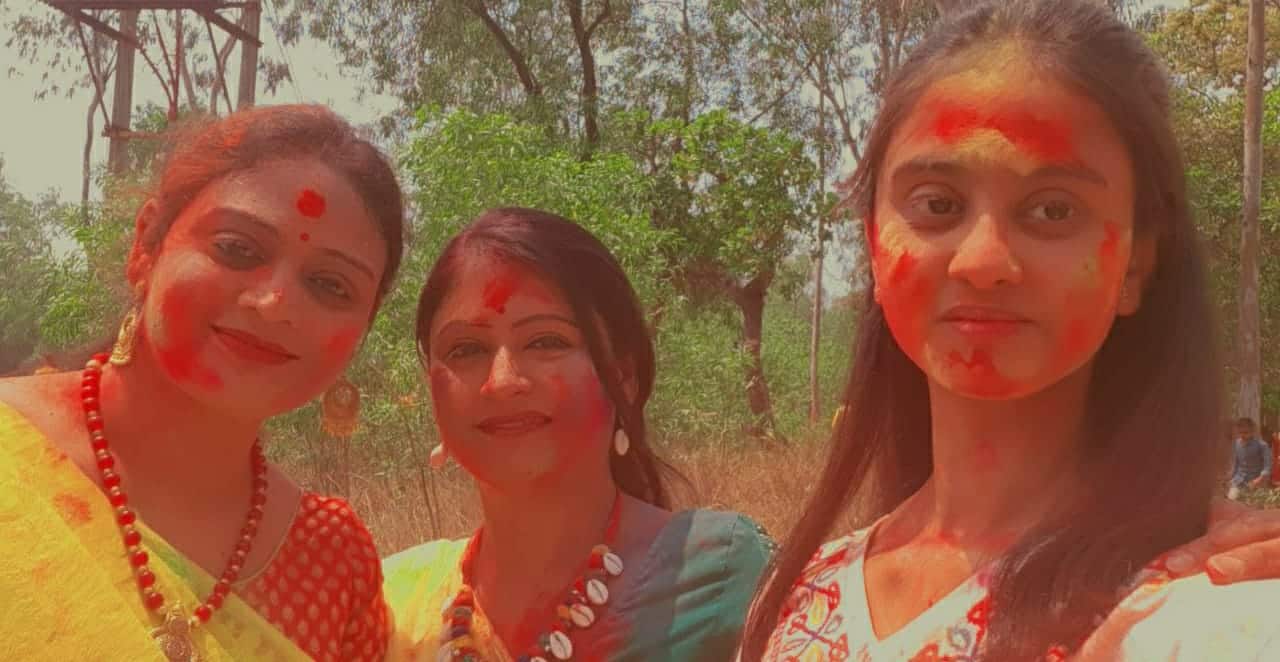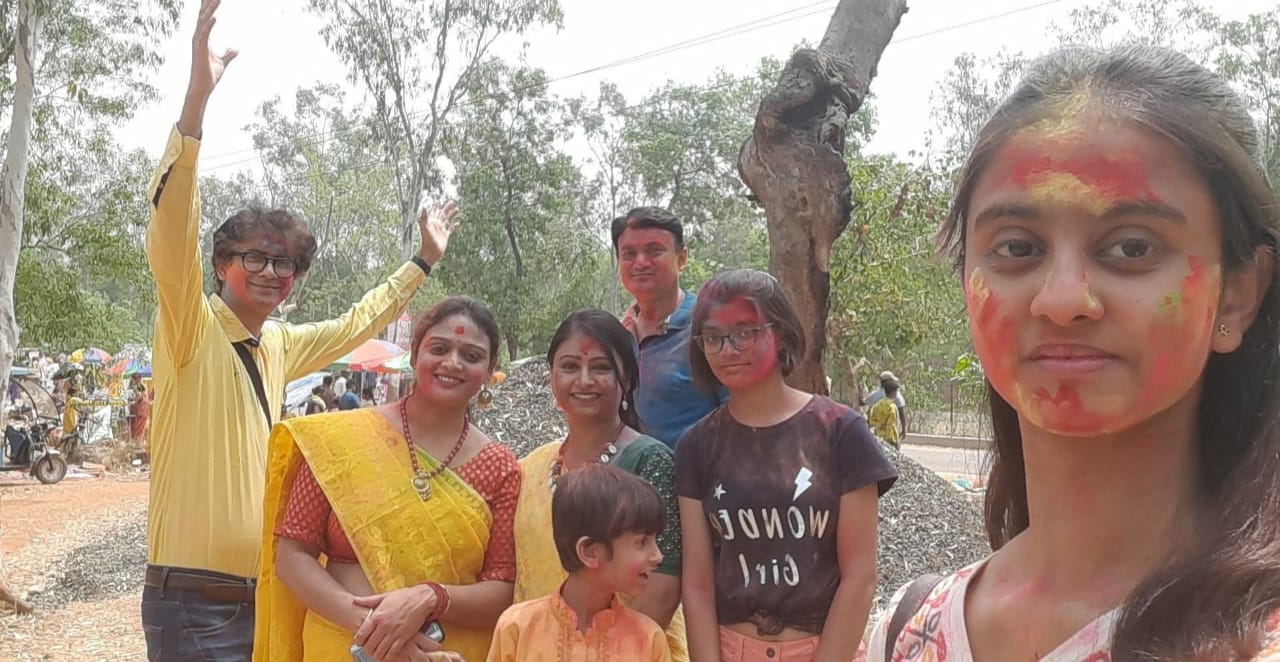Culture
‘Basanta Utsab’ (Holi) at Shatiniketan
“If Winter comes , can Spring be far behind?”
The poet was quite confirmed that after a bleak wintry dizziness Spring would emerge with positivity and liveliness . This 18th century romantic vision proves to be true in the present Covid situation as well. The freezing fangs of the pandemic have become heavy on us yet the sprightful spirits never fail to welcome Spring for hopes and hues , for light and life.
However, Bengal finds a Spring of different shade in Birbhum, Shantiniketan. India’s version of Holi,the festival of colour coincides with Bengal’s Dol Yatra on Dol Purnima( full moon day of ‘Falgun’ month according to Bengali calender, i.e. in Spring). Dol is commonly associated with ‘leelas of Sri Krishna & Radharani’ in Vrindavan, but Shantiniketan, world-poet Rabindranath Tagore’s very own abode(an ashram) observes it irrespective of any religious attachment . Thus, for the ‘ashramik’ of Shantiniketan it is ‘Basanta Utsab’, a festival to welcome Basanta (Spring).
History of ‘Basanta Utsab’
Dating back to 1907 , the documented history asserts that Kabiguru’s dearest son Samindranath Thakur playfully initiated ‘Ritu Utsab’ (festival to celebrate and appreciate the prevalent yet subtle beauties of different seasons) at Shantiniketan. Since then ‘Basanta Utsab’ was held every year under enthusiastic supervision of Rabi Thakur, but not necessarily on ‘Dol Purnima’. Perhaps, the poet’s philosophy of getting united with Nature’s bounty which has the power to dissolve life’s artificialities, promoted the concept of ‘Basanta Utsab’ . It is an event when people bow down to the glory of Nature & unify with the vibrant beauty of the sanguine Spring.
After 1923 it started to gain a concrete format of festival. The residents of the Ashram used to design the entire programme according to the poet’s aesthetic sense,manifested in Kirtan(praising the Lord’s glory), ‘Parikrama’ (circulation) of the ashram premise & sprinkling of ‘abir’ (coloured and perfumed powder). With passing years, ‘Basanto Utsab’ has witnessed changes in compliance with the varying socio-cultural scenario.
Today’s Basanta Utsab
For last few decades Viswabharati University was supposed to organise the ‘utsab’ officially within the varsity campus. But transcending the barriers of time and cultures it has now appeared on a platform of international recognition. People from all over the globe surge to experience the charm of this ‘Rabindrik Basanta Utsab’.
On the day of the festival ,very early in the morning, students decked in traditional bright yellow attires and tinged in the flame of ‘Palash’ fill the air with songs and rhythms of their dancing steps. They summon all to wake up from their deep slumber & rejoice the grace of nature singing in Rabindranath’s note (Ore grihobasi,khol dwar, khol/laglo j dol). A procession of long musical dance is then performed by several students of different Bhavans (Departments).Later , students & teachers engage in the colourful tradition of applying ‘abir’ on everyone. In this delightful atmosphere of vivacious colour, visitors are heartily welcomed. ‘Amrakunja’ (mango grove) vibrates with Baul songs ( a kind of bengali folk song). In the evening, one of the selected dance drama of Tagore is presented by the students of Sangit Bhavan.
Following few political controversies and increasing Covid pandemic, this year it was observed unofficially & unostentatiously. Fading out of the elegance of the carnival has deeply moved the mass. But their euphoric spirit will never tire to glorify the rapture of Nature . Hence, they continue to sing in joy invoking Spring ‘ E ki labonye purno prano pranesho he/ Ananda basanta somagome..’.
Best places to visit around Shantiniketan
- Khoai Hat- weekly fair of locally made handicrafts in the lap of nature.
- Deer Park:- A peaceful home for naturally bred deer.
- Amar Kutir:- local people give stalls to sell & exhibit handicrafts. Even one can enjoy here pure Bengali dishes & selected cuisines from the kitchen of Thakur family.
- Tagore’s ashram and Chhatimtala, built by Tagore’s father, Maharshi Debendranath Thakur, are also among the places of interest frequently visited by tourists .
Places to stay
Budget-friendly hotels, resorts & homestays are ample in number in & around the town of Bolpur-Santiniketan where refreshing beauty of nature secures the weary souls with her solace.








